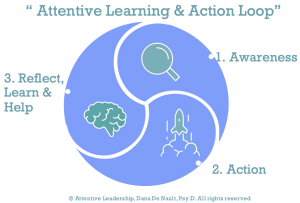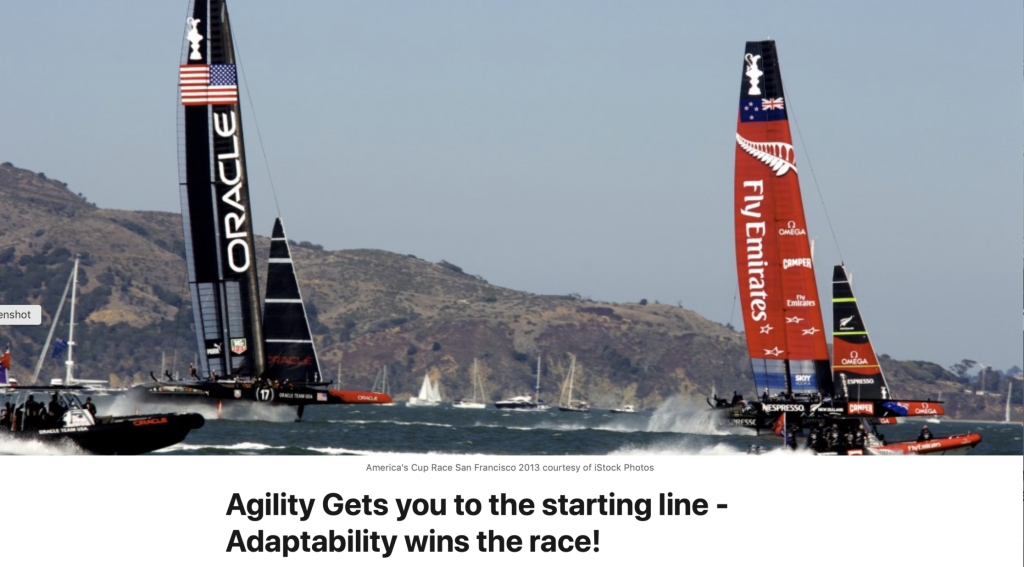There’s been lots of talk recently, by pundits and thought-leaders about business transformational change being very different from more traditional types of change.
After nearly three years as a business transformation orchestrator, I concur with Michael Wade, James Macauley, Andy Noronha and Joel Barbier in their recent book, Orchestrating Transformation: How to Deliver Winning Performance with a Connected Approach to Change, that “the current environment and organization are too complex and fast-moving” for traditional change management approaches to work.
My experience is that what does work and takes a PMO to a higher plane is proactive orchestration supported by a visible orchestrator role. This makes transformation stickier and builds far more adaptive teams able to more easily ‘bob and weave’ in response to disruptive change in markets or with competitors.
The orchestrator role has two primary objectives: The first is to empower cross-functional teams to operate, as McKinsey says, with high standards of alignment, accountability, expertise, transparency, collaboration, and with the ability to quickly adapt to changing customer, market, partner, and internal needs.
The second objective of an orchestrator is ‘orchestrating’ this interconnecting of teams to create a connected transformational network able to support perpetual and relentless evolution. In other words, to paraphrase Wikipedia, orchestrators interpret the score (i.e. the reiterating the ‘Big Picture with its compelling story), set the tempo (i.e. determining what/who needs to speed up or slow down), ensure correct entry and exits by members of the ensemble (i.e. clarifying roles/contributions and how they all fit together) and where appropriate, shape the phrasing. (i.e. influencing each team to their highest quality of performance)
They do this by focusing on five guiding principles:
- Keeping the Flame of the ‘Big Picture/North Star’ and its ‘Compelling Story’ alive and visible.’
Making sure that change leaders have clear answers to critical questions such as:
*What is this all for? What are we working toward?
*Where we are? Where do we want to go!
*What’s helping us get there? What’s making us stumble?

Proactively probing the strategic assumptions and implications of the transformation and its impact on the greater good is essential. This ‘peeling of the onion’ with systematic thinking helps uncover and shine a powerful curative light on root causes, underlying cultural assumptions, and of course those pesky elephants in the room that get in the way.
- Creating safe, trust-based and empowered collaborative team environments along with a brand narrative that clearly communicates to both heart and mind.
Making sure that team members who are driving the change understand from leaders that they’re a special group with high-performance standards that can be met only through authentic dialogue and knowledge sharing. (Daniel Coyle’s Culture Code 2018) This also involves shifting conversations away from scope, schedule and budget discussions and towards strategy ideation, execution plan articulation and root cause issue deconstruction.

- Driving to a business outcomes ‘end game.’
The focus here is on keeping the team focused on using the agile, adaptive performance management and decision-making operating model to move the ball incrementally down the field. The model is the foundation for identifying incremental strategy and execution course corrections. This isn’t to say that there isn’t a role for the ‘Hail Mary pass’, or the ‘Grand Slam home run’ from time to time.
When team members see the immediate positive or negative impact of their actions, innovative ideation can happen with greater regularity. Easy access to capital for low-risk experimentation also is a key for ground-breaking innovation.

- Proactively connecting, advocating and threading customers, partners, teams, organizations and functions as Connectors and Mavens (Gladwell 2002).
When orchestrators focus on identifying connectors and mavens that Malcolm Gladwell coined in his book “The Tipping Point”, more effective ConnectedGovernance™ will happen. As discussed in my book Agile Strategy Execution: Revolutionizing the How!, ConnectedGovernance,™ involves connecting leadership practices, employee engagement mechanisms and collaboration processes using leading-edge digitization experiences to provide actionable intelligence. This accelerates the sharing of information and ideas. Then, more people will galvanize and join the transformation virally.

To do this effectively orchestrators must deeply understand the business ecosystem from both customer and partner’s journey and functional value chain perspectives to be effective. Orchestrators can also serve as evangelical advocates for customer and partner personas that will be impacted by the transformation. Orchestrators also ensure closed-loop feedback processes are in place and that outputs generated are used.
- Modeling and coaching the new ‘Attentive’ Leadership mindset needed for effective agile and adaptive execution. (de Nault 2019)
De Nault’s Attentive Leader Mindset Loop© (illustrated here) includes demonstrating transactional-to-transformational style-shifting, supporting a test-deploy-retest-redeploy mentality, visible self-reflection, engaging in impression capture™ and team reflect-act-learn activities.

This approach advocates creating and managing cross-functional cohorts or communities to help team participants overcome the negative power of learning anxiety, (i.e. the overarching fear articulated by Edgar and Peter Shein in 2017 that learning a new way of working will cause loss of position, power or self-esteem, or even group membership).
Why orchestration not a PMO?
There’s a common desire to understand why orchestration is a better construct than a traditional Program Management Office (PMO) as an agile, adaptive decision-making and governance approach. Most companies manage key strategic initiatives with a PMO or Portfolio/Program Management Office. Broad strategic initiatives are deconstructed into programs and projects and workstreams. Team members are assigned to the various work efforts and the whole thing is governed by a steering committee of some kind.

A PMO acts as an uber facilitator keeping track of scope, schedule, budget, dependencies, issues, metrics, and mitigating risk. Experience has shown that nothing beats a traditional PMO for complicated, transactional initiatives, where goals are clearly understood, and needed resources are at hand. In these environments, success requires coordination across functional and/or organizational lines, and clearly defined, predictable steps for execution. Fluency in scope, schedule, budget, issue identification, risk assessment and mitigation are still important. However, these are just table stakes in today’s business environments and need to be managed competently ‘out-of-the-gate.’
In complex environments outcomes aren’t certain, often they can’t easily be objectively defined. Steps to success are not predictable nor are they reproducible (Nason 2017). This means that a new more organic, holistic and systems and networked-based approach is needed that senses and learns on the fly. Proactive orchestration using these 5 guiding principles can push traditional PMO methodologies to a much higher plane. This becomes even more critical when the reaction of stakeholder subgroups can reshape the needed direction of the strategy or executional capabilities in a heartbeat.
PMO’s and functional enablement drive agility not adaptability

The foundation for adaptability are trusted, collaborative ‘braintrusts’ at multiple levels in the organization where leaders can raise function-originating issues in an authentic, timely and non-blaming way. This can happen only with ConnectedGovernance™ that is oriented towards customer and partner value realization and appreciation of the greater good. This not to say that effective functional enablement isn’t important, only that they only get the team to the starting line.
Leaders must become present, engaged, and transformative by being, sensing, leading, and learning in an agile, adaptive way. This encourages and supports in-the-moment strategy evolution, execution course correcting and new capabilities development. This new type of leadership mindset is what will enable the team to ‘read the wind’ and win the race in our world of rapid, disruptive change. With an orchestration lens, the focus is more on people, and mindset based on accessible actionable intelligence, which helps to create a flatter, more networked organization. With empowered teams that operate more like living and sensing organisms than machines, execution can be accelerated and strategic mid-stride course corrections are much easier.
In summary, as Michael Wade et al have said, orchestrators need to be “humble, adaptable, visionary and engaged (HAVE). Being Humble is about being able to work with teams without owning them. Being Adaptable is about being able to learn and change course without worrying about losing face. Being Visionary is about seeing the broader end game. Being Engaged is about communicating the transformation’s financial and business rationale to a broad range of stakeholders” constantly. In my next post, I’ll share the skills that good orchestrators need to have and the kind of mindful practice they need to inculcate to be successful.
Article by channel:
Everything you need to know about Digital Transformation
The best articles, news and events direct to your inbox
Read more articles tagged: Change & Transformation, Featured, Leadership










